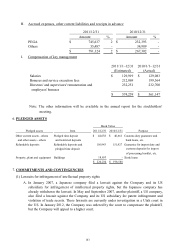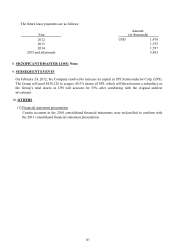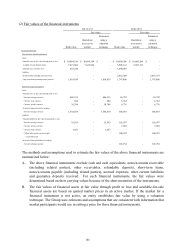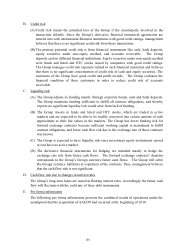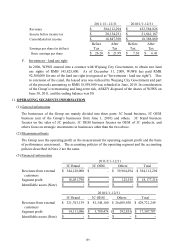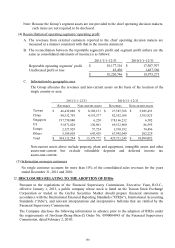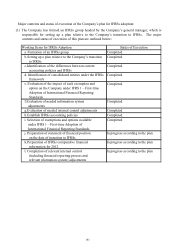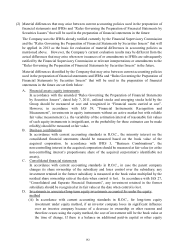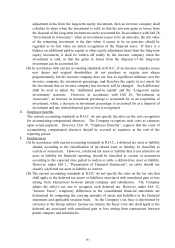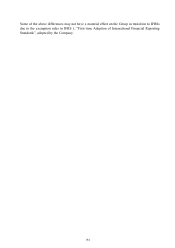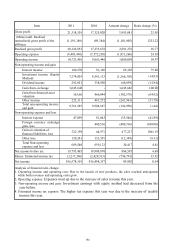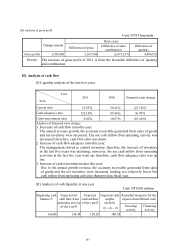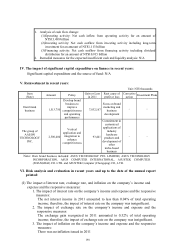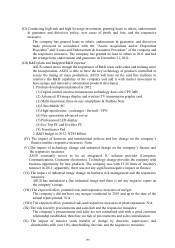Asus 2011 Annual Report Download - page 196
Download and view the complete annual report
Please find page 196 of the 2011 Asus annual report below. You can navigate through the pages in the report by either clicking on the pages listed below, or by using the keyword search tool below to find specific information within the annual report.
192
~64~
(2) Material differences that may arise between current accounting policies used in the preparation of
financial statements and IFRSs and “Rules Governing the Preparation of Financial Statements by
Securities Issuers” that will be used in the preparation of financial statements in the future:
The Company uses the IFRSs already ratified currently by the Financial Supervisory Commission
and the “Rules Governing the Preparation of Financial Statements by Securities Issuers” that will
be applied in 2013 as the basis for evaluation of material differences in accounting policies as
mentioned above. However, the Company’s current evaluation results may be different from the
actual differences that may arise when new issuances of or amendments to IFRSs are subsequently
ratified by the Financial Supervisory Commission or relevant interpretations or amendments to the
“Rules Governing the Preparation of Financial Statements by Securities Issuers” in the future.
Material differences identified by the Company that may arise between current accounting policies
used in the preparation of financial statements and IFRSs and “Rules Governing the Preparation of
Financial Statements by Securities Issuers” that will be used in the preparation of financial
statements in the future are set forth below:
A. Financial assets: equity instruments
In accordance with the amended “Rules Governing the Preparation of Financial Statements
by Securities Issuers”, dated July 7, 2011, unlisted stocks and emerging stocks held by the
Group should be measured at cost and recognized in “Financial assets carried at cost”.
However, in accordance with IAS 39, “Financial Instruments: Recognition and
Measurement”, investments in equity instruments without an active market but with reliable
fair value measurement (i.e. the variability of the estimation interval of reasonable fair values
of such equity instruments is insignificant, or the probability for these estimates can be made
reliably) should be measured at fair value.
B. Business combinations
In accordance with current accounting standards in R.O.C., the minority interest on the
consolidated financial statements should be measured based on the book value of the
acquired corporation. In accordance with IFRS 3, “Business Combinations”, the
non-controlling interest in the acquired corporation should be measured at fair value (or at the
non-controlling interest’s proportionate share of the acquired corporation’s identifiable net
assets).
C. Consolidated financial statements
In accordance with current accounting standards in R.O.C., in case the parent company
changes its share ownership of the subsidiary and loses control over the subsidiary, any
investment retained in the former subsidiary is measured at the book value multiplied by the
residual share ownership ratio at the date when control is lost. In accordance with IAS 27,
“Consolidated and Separate Financial Statements”, any investment retained in the former
subsidiary should be recognized at its fair value at the date when control is lost.
D. Investments in associates/long-term equity investments accounted for under the equity
method
(A) In accordance with current accounting standards in R.O.C., for long-term equity
investment under equity method, if an investor company loses its significant influence
over an investee company because of a decrease in ownership or other reasons and
therefore ceases using the equity method, the cost of investment will be the book value at
the time of change. If there is a balance on additional paid-in capital or other equity



